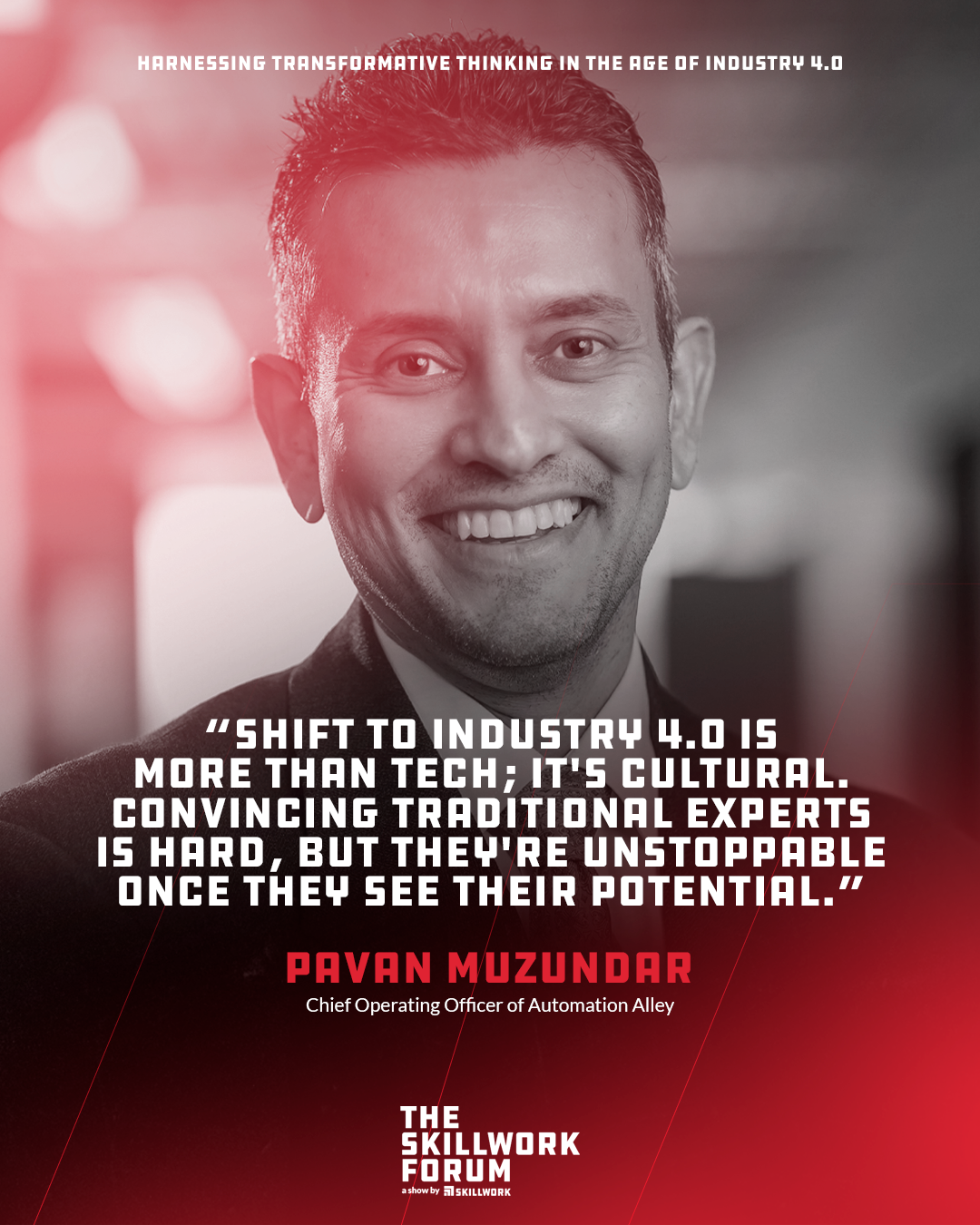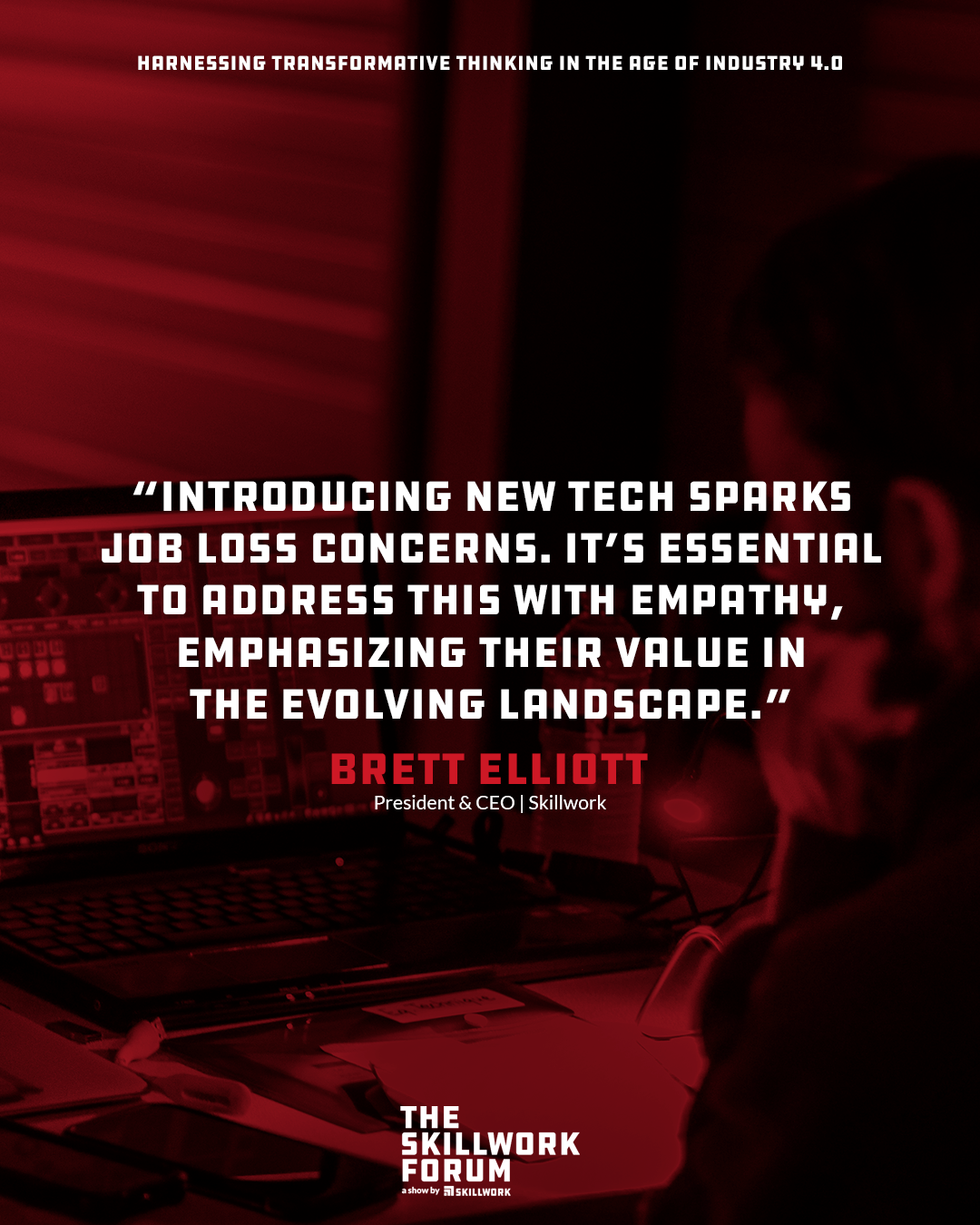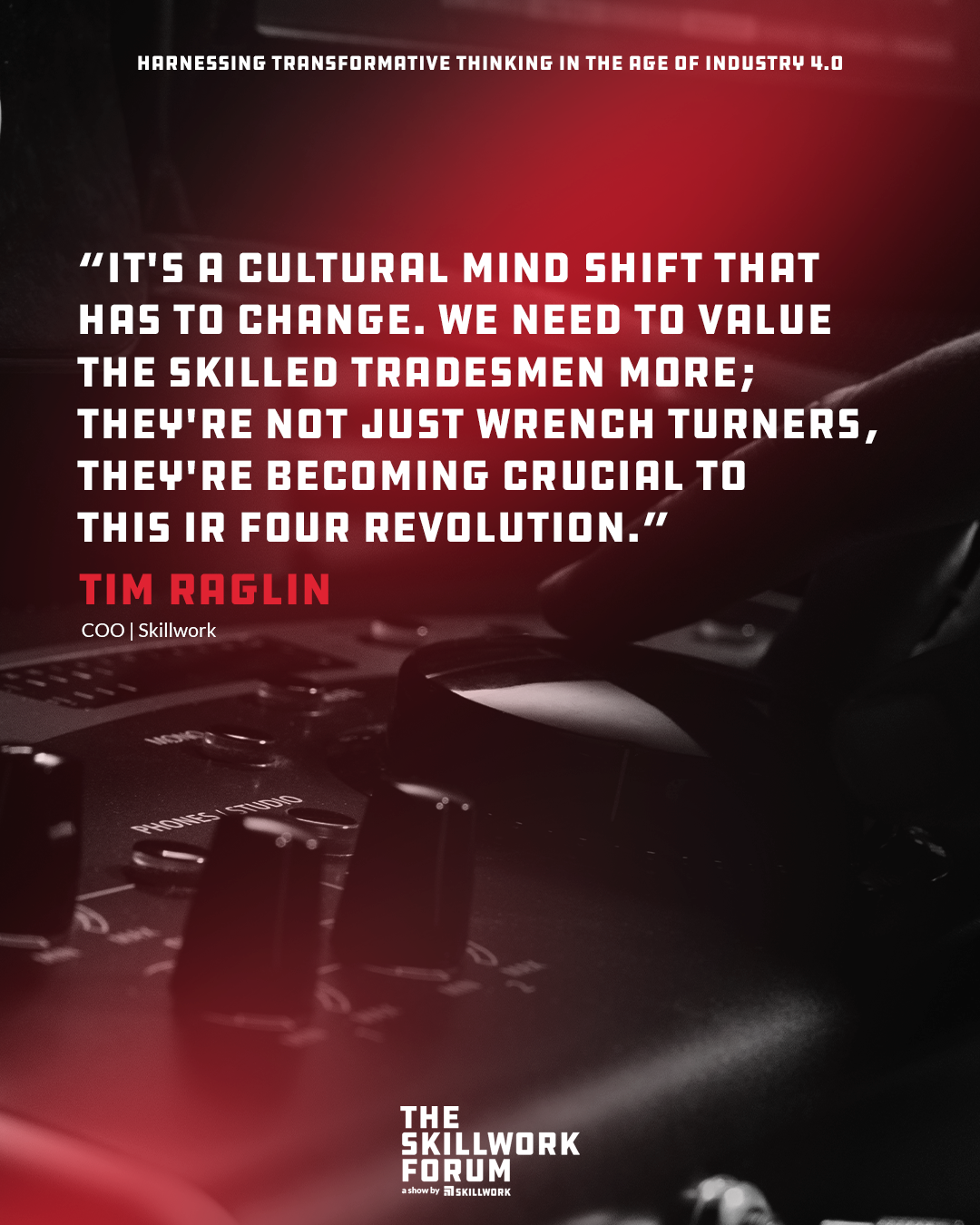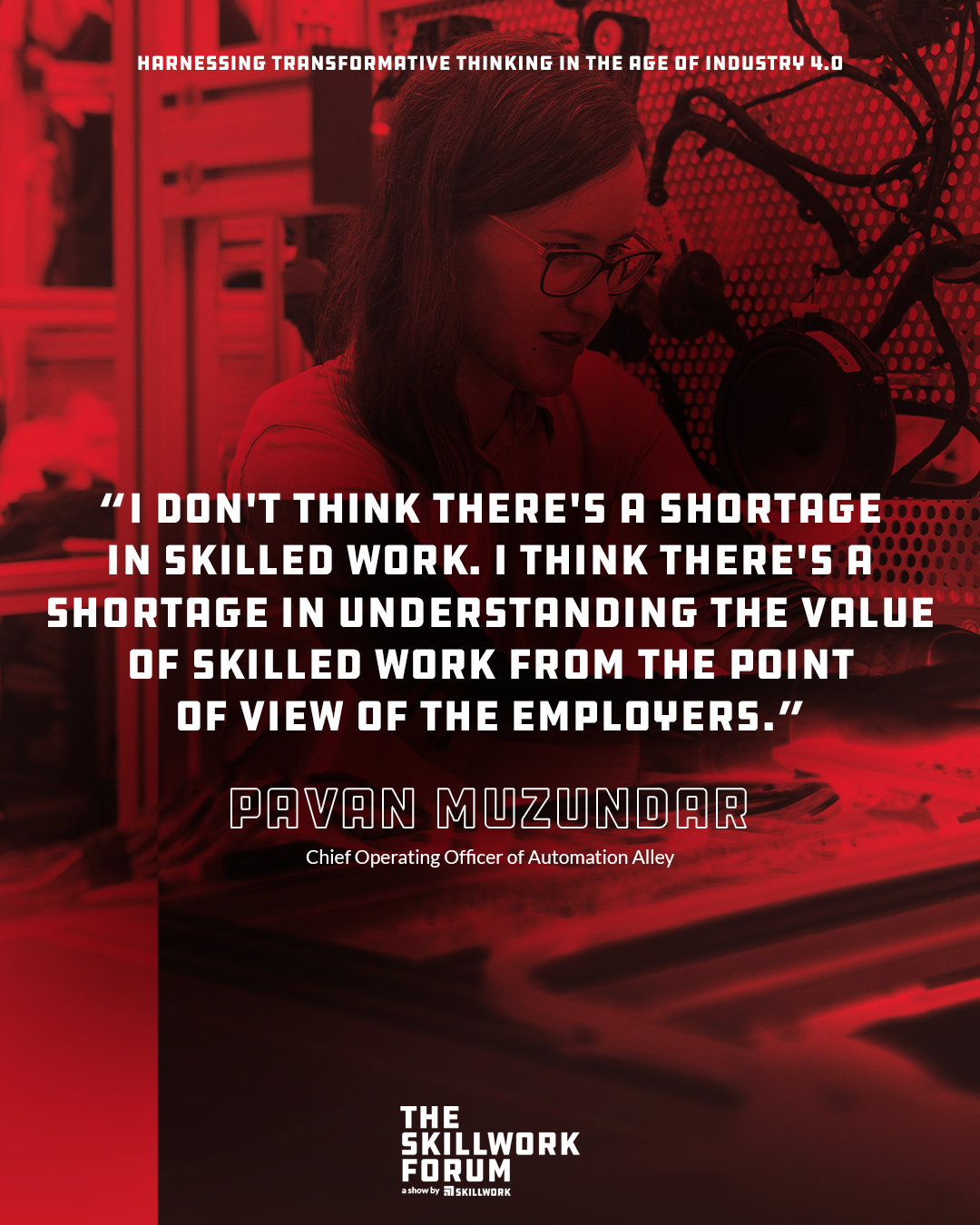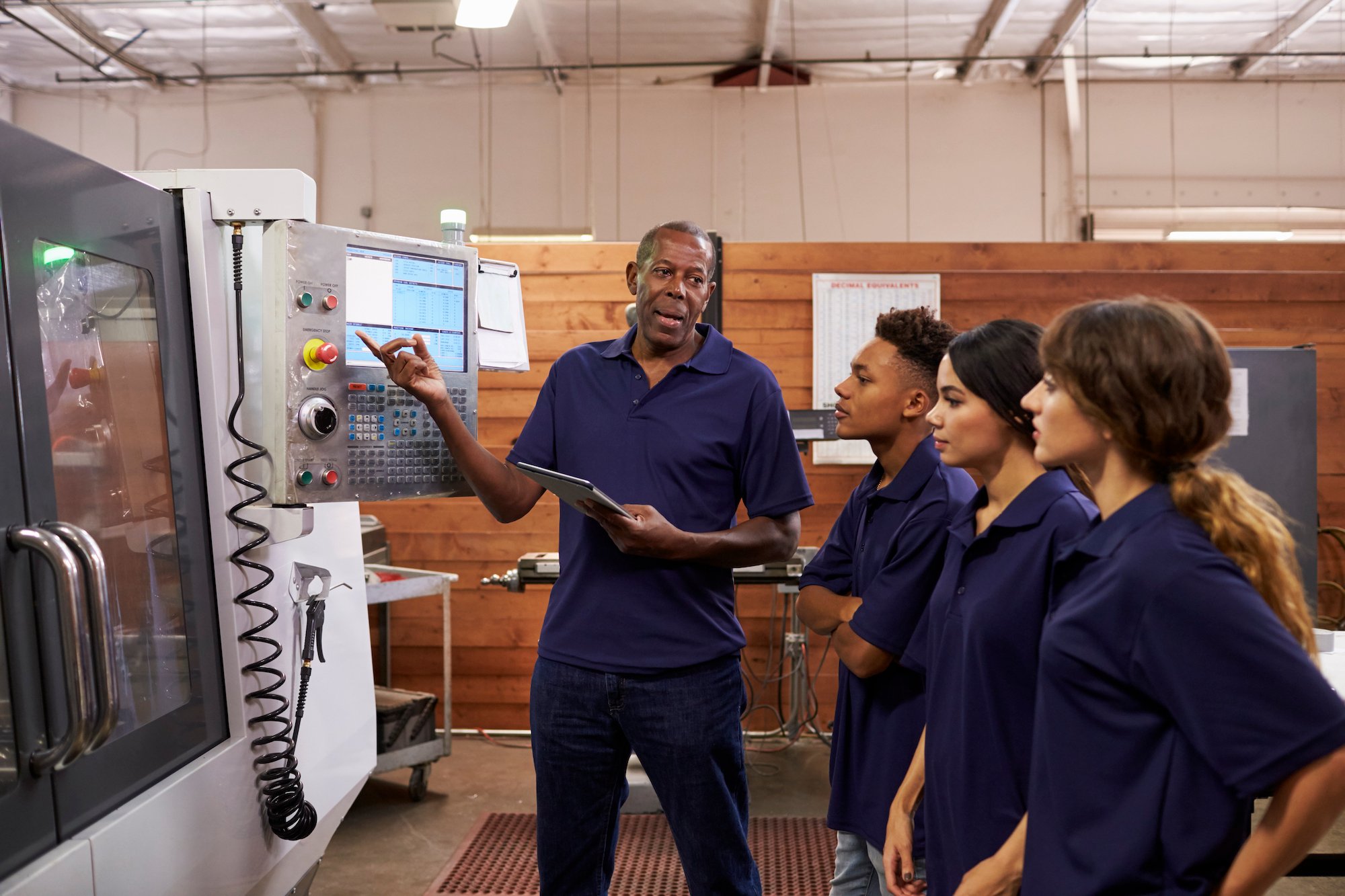Automation Alley, Project Diamond, and the Four Industrial Revolutions
If you desire you can listen this episode on Spotify.
On this podcast, The Skillwork Forum, we get together to talk about trends, issues, and topics surrounding the skilled trades. Lately, we've been focused on this concept of the Fourth Industrial Revolution in America and across the world.
At a recent forum on connected manufacturing, we met Pavan Muzundar, the COO of a non-profit called Automation Alley. Their mandate is to be the Industry 4.0 knowledge center for the state of Michigan, primarily serving small and medium-sized manufacturers.
Pavan’s background is not in manufacturing but in electronics. He got his bachelor's degree in electronics and a master's in electrical and computer science. He did some consulting for large companies in the Fortune 500 space, then moved to Michigan and worked for a small family-owned business.
In that transition, he noticed the difference in culture and access to tools and processes in a large organization versus the nimbleness of a small organization without the same resources. He wanted to understand what makes companies tick, so he got a charter financial analyst designation. Over time, he created a system called IQ which embodies the principles of culture, strategy, and execution that companies can use within their organization to become excellent.
And the connection with Automation Alley was back in 2014. Automation Alley put 25 companies through Pavan’s IQ program with great success. Finally, Automation Alley went through the program itself with Pavan as the facilitator and COO. Since then, they’ve evolved into the Industry 4.0 manufacturing knowledge center for Michigan.
Now, let’s jump into what led up to the Fourth Industrial Revolution in America by reviewing the four industrial revolutions.
What Are The 4 Industrial Revolutions?
- Industry 1.0: The First Industrial Revolution was the transition from manual labor to machines that simulated raw muscle power. Steam engines played a pivotal role in this revolution, powering factories, mines, and transportation systems, especially the railways.
- Industry 2.0: Building upon the advancements of the first revolution, the Second Industrial Revolution scaled up manufacturing. Ford was a pioneer during this time, creating the assembly line, which enabled mass manufacturing production.
- Industry 3.0: The Third Industrial Revolution is what Pavan calls “automation 1.0,” or the digital revolution. It was when computers and robotics were introduced in manufacturing to increase efficiency.
- Industry 4.0: The Fourth Industrial Revolution in America is known by many names: Smart manufacturing, Industry 4.0, and 4IR, just to name a few. This is where we see cyber-physical systems coming together through intelligent communication across factory technology.
As technology washes over the industry, manufacturers can’t get too comfortable. You have to use your knowledge from the previous revolution as a foundation to pivot into this new reality of the Fourth Industrial Revolution in manufacturing.
However, what some people call Industry 4.0 may be more accurately described as Industry 3.5 or some number between 3.1 and 3.9. In this case, manufacturers are basically accelerating or optimizing what they’re already doing instead of pivoting.
For example, traditional companies are completely ignoring things like additive manufacturing. If you’re wondering, “What does additive manufacturing mean?” we explain this innovation in the next section.
But when you embrace Industry 4.0 manufacturing, there are huge implications on how you run your business, such as the types of people you have, the types of workflows you use, and the type of roles and responsibilities that you hire for.
Automation Alley’s Project Diamond
Project Diamond is an example of opportunity meets preparation.
As most will remember, during the early days of the pandemic, everyone was having trouble getting PPE (personal protective equipment). Oakland County, where Automation Alley is located, came to Automation Alley and asked them to define a program that can accomplish two things: produce PPE flexibly but also have the catalyzing effect of digital transformation.
Pavan says they’ve been on this journey of trying to understand what is at the core of Industry 4.0, which is software driving manufacturing. The simplest example of that is additive manufacturing, where you have this 3D design in CAD and a few software parameters that outskirts a physical product.
However, there's little chance a small to medium-sized manufacturer will buy a 3D printer on their own. So Automation Alley gave 300 companies a 3D printer to use, but they had to make it available if the nonprofit wanted to print some PPE on it. These companies became Project Diamond’s phase one participants.
Pavan said they saw a little bit of a bell curve-type response. 10 to 15% took the printer and started selling stuff, making jigs, fixtures, and little things to make their shops more efficient, etc. The majority printed a few things but couldn’t figure out how the technology fit into their world. And then a small group didn’t quite get the point.
Phase two, which kicked off in April, will add another 250 companies to the network. This time, participants will be taken through a much more deliberate process of learning how to design for additive manufacturing, understanding how to find the opportunities, and then building a business around additive. The goal is for them to be more focused on the intellectual property that they design or develop than the process that they use to make the product.
To give an example, one company used its printer to take a component that was manufactured traditionally and reverse engineer it to produce it using additive manufacturing. They then realized that if they made a couple of changes to the CAD design, they could make another version of that product. Using agile, iterative thinking, they created 15 better versions of the product and print them on demand.
In reality, we’re just scratching the surface of the Fourth Industrial Revolution in America, but it’s exciting to watch it transform the industry. Things are exponentially changing, so the future is full of potential for the manufacturing space.
Closing Thoughts On the Skilled Labor Shortage
Addressing a closing question about the skilled talent shortage, Pavan offers two viewpoints:
- The Value of Skilled Workers: Pavan believes that the real problem behind the labor shortage is that employers don’t value skilled workers enough. He uses an example of a business that struggles with retaining CNC operators, suggesting that the issue isn't hiring but retaining talent. He emphasizes that if the economics and incentives were right, there wouldn’t be a shortage.
- Role of Artificial Intelligence (AI): Pavan is optimistic about the potential of AI to augment skilled labor. He believes that AI can help in upskilling, lifelong learning, and making the workforce more productive. From his perspective, AI is a tool without emotions or purpose; humans provide that purpose and direction. Instead of fearing job loss, we should harness the power of AI and use it to our advantage.
We talk a lot about the skilled labor shortage here at Skillwork, so it’s interesting getting thoughts from our guests on the topic. Whether you’re an employer looking to hire or a tradesman looking for work amidst this shortage, we can help. As a skilled labor travel staffing agency, we bridge the gap between employers and tradesmen across the United States.
As always, thanks for joining us for another episode of The Skillwork Forum!